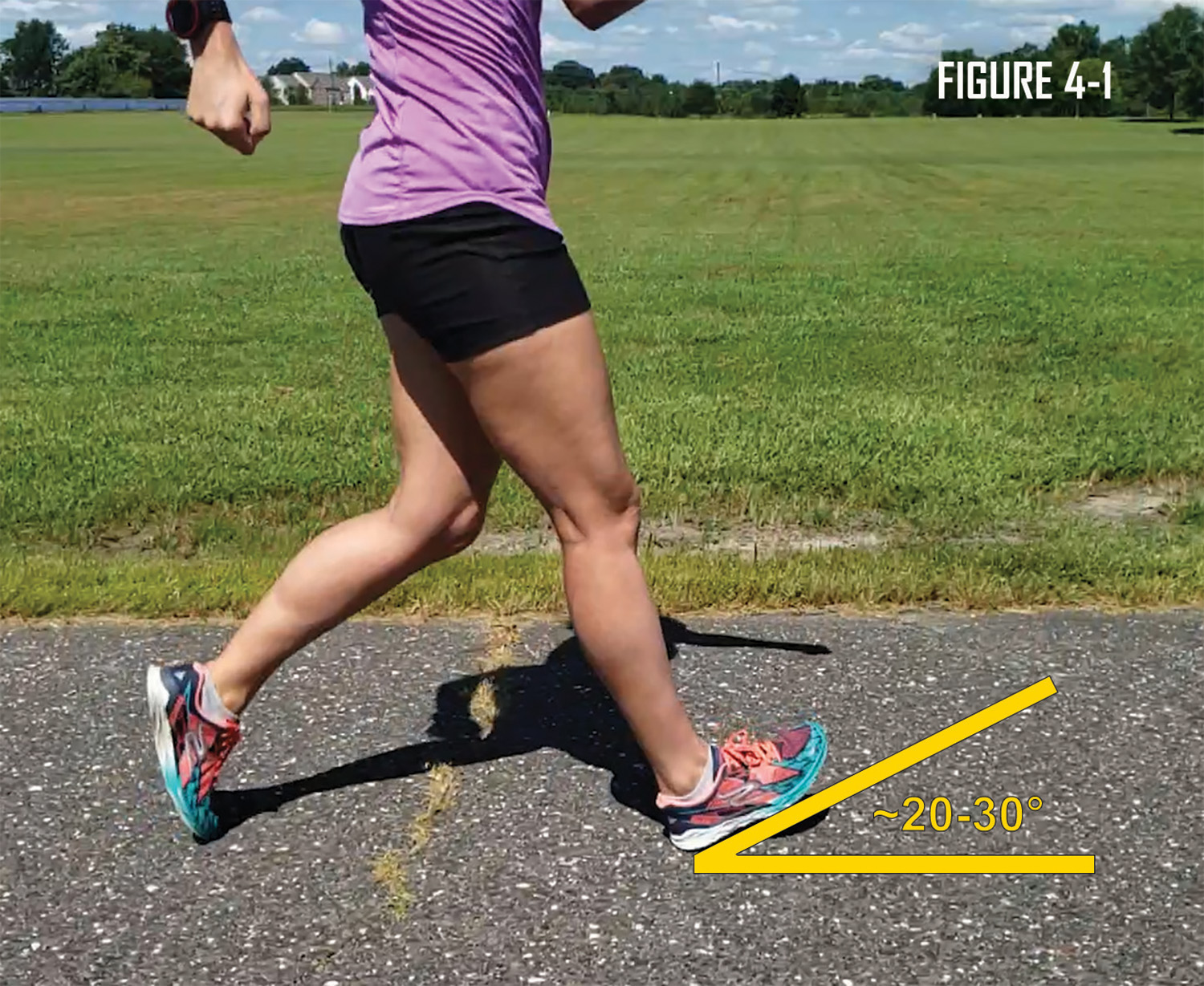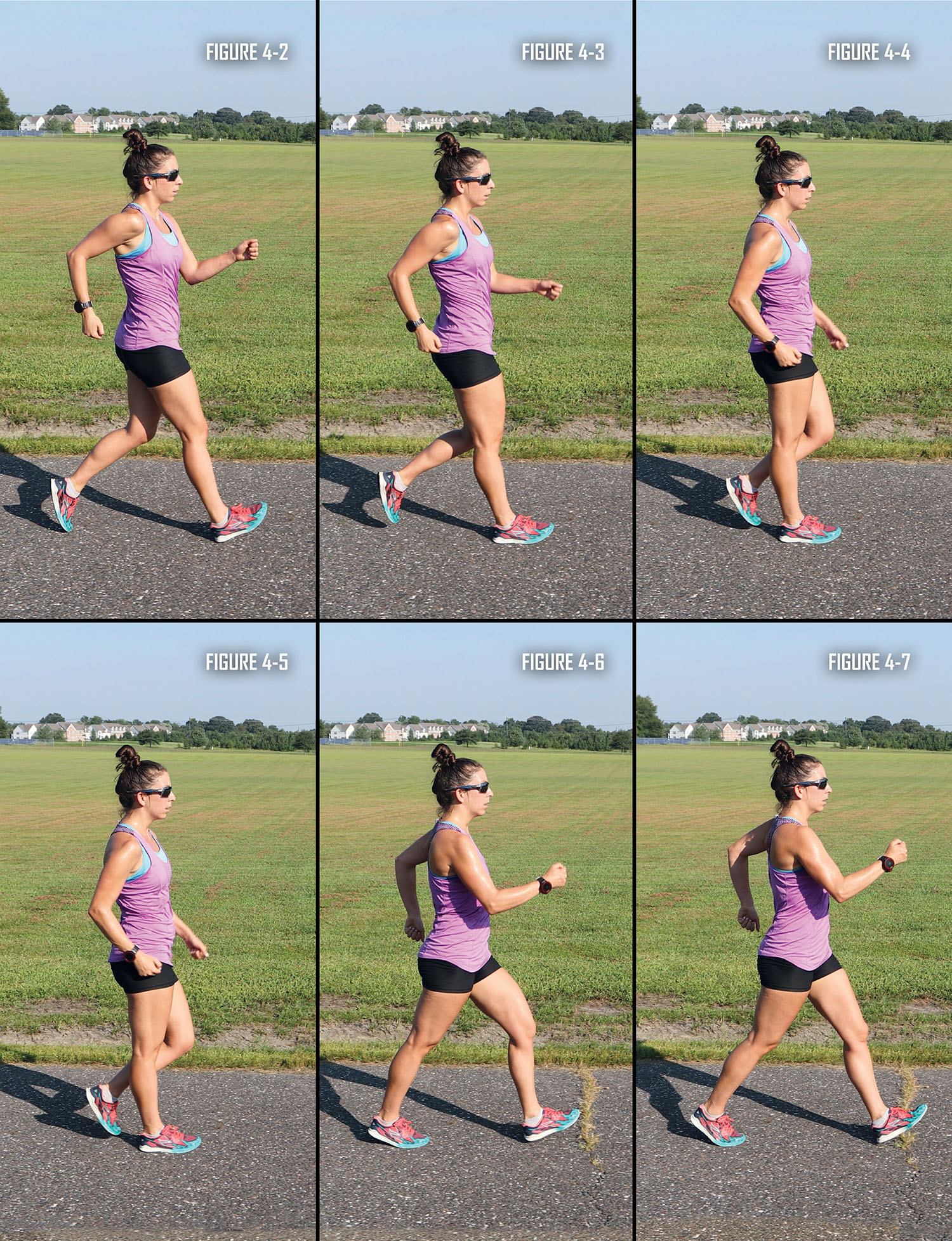Overall Stride
Let’s observe a complete stride. We can see the right foot striking the ground at the heel while the leg simultaneously straightens (Figure 4-2), the leg stays straightened as the body passes directly over the leg (Figure 4-4) and beyond (Figure 4-6). Finally, the leg bends (Figure 4-7) as the ball of the right foot begins to lift from the ground. The leg then swings forward until it straightens in front of the body as the heel contacts the ground. Achieving this smooth, synchronized action is the key to success.
Let’s dissect the stride further by observing what happens as the leg completes its swing forward. As it straightens the toes are pointed up (between 20 to 30 degrees from the ground as measured along the sole of the shoe) and the heel strikes the ground (Figure 4-1).

Then the body moves forward over the right leg. This is where walkers tend to violate the definition of race walking. The leg must remain straightened until it is in the vertical position.
Once the leg is beyond the vertical position, it may bend.
However, when it comes time to lift your heel off the ground, if your leg is still straightened, you get an extra thrust forward by pushing off your rear foot. With proper flexibility and strength your leg stays straightened longer, and you obtain this advantageous thrust. Ideally, the leg remains straightened until the ball of your rear foot is about to lift off the ground.
Then roll up onto the toe of your rear foot. Notice that as the rear (right) foot leaves the ground, the front (left) leg is already in position (Figure 4-7).

Next Lesson: Overall Stride - Race Walking Up Close Continued
Quick Link: Correct Hip Motion
Quick Link: Race Walking Arm Motion